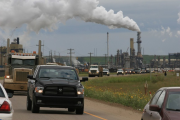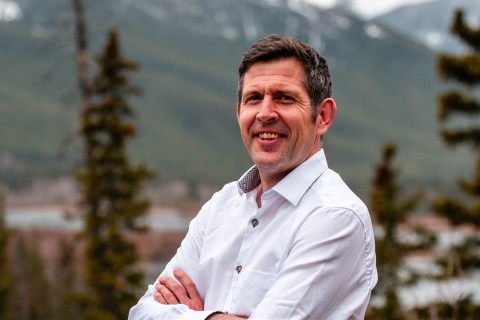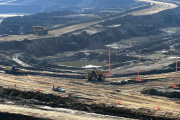Imagine the City of Vancouver. Now imagine it covered in toxic sludge about two stories deep. That's how much toxic tailings waste you end up with after 40 years of unchecked oilsands production in northern Alberta. And that's what a flock of ducks came up against Monday night when they needed somewhere to land.
As this story unfolds, there is plenty of talk of freezing rain and waterfowl deterrent systems, but the simple truth is there's no safe way to store 840 billion litres of toxic tailings waste. When you cover 170 square kilometres of boreal forest with toxic lakes, accidents will happen: ducks will need a place to land, dams will continue to leak and toxins will seep into groundwater. And the risk of a catastrophic dam failure, as recently witnessed in Hungary, will persist.
This latest incident happened just days after Syncrude was fined $3 million for the death of 1,600 ducks on one of its tailings lakes in 2008.
Then, only a few days later, 11 powerful U.S. decision-makers signalled they were concerned about the environmental impacts from oilsands development with a proposed pipeline set to potentially double U.S. imports of oilsands. They are not convinced all is being done to address the environmental impacts of oilsands development.
Are these two stories connected? Sure they are. Both instances indicate that the public relations effort by the Government of Alberta and industry isn't working. In fact, the time and taxpayer money spent on these public relations efforts detract from the real need to take concrete actions to address the problems.
Government and industry alike have been overpromising and under-delivering, an approach that is nearly guaranteed to end poorly for all Albertans.
Let's look at the evidence. Following the most recent bird deaths this week, Alberta scrambled and announced an investigation — but it's clear the only way to eliminate the risk of these types of incidents is to reduce, and eventually eliminate, tailings lakes. There is a growing chorus of editorial boards, pundits and even people from within the industry who acknowledge this reality. Not only are the industry and Alberta's reputations at stake, but investor and consumer confidence also hangs in the balance.
The stark truth is that the latest rules — a first step in reducing the rate of tailings production — are not even being enforced, with the province continuing to accept a number of tailings plans, including one from Syncrude, that do not meet the new rules. The tough talk that accompanied the release of the rules has been diluted by more recent talk of being "flexible" with companies on enforcement.
On one hand, Syncrude is being fined for failing to keep ducks off its ponds, but on the other, the company is getting a free pass to delay future tailings cleanup. This kind of inconsistency is precisely why American decision-makers do not trust that all is being done to mitigate the oilsands' environmental impact. The U.S. senators are asking well-informed questions suggesting they understand the issues and need to be absolutely convinced that everything possible is being done to address environmental impacts.
While Premier Stelmach has talked tough about eliminating tailings lakes, even if the current rules were enforced they are only a baby step in this direction.
Only two of nine oilsands projects are fully complying with the rules. It's clear that the only way tailings lakes will be eliminated is through government leadership. This leadership must come in the form of a clear timeline to strengthen and then strictly enforce regulations, alongside other policies, to accelerate the necessary development and adoption of solutions.
Alberta already has a legacy of tailings lakes that pose a major environmental risk, as so clearly demonstrated this past week. With new mining projects now being developed, the number of tailings lakes in the boreal forest will increase in the coming years, even if the current rules are enforced.
What's needed is a clear plan to reverse this trend and to avoid adding to this liability by approving new oilsands mines and their tailings lakes, such as the Total Joslyn project currently being considered. The provincial government has already approved enough new oilsands projects to nearly double production from what it is today. It's time to say "no" to another new mine that would create even more tailings lakes.
It is clear to Albertan and American observers alike, that half-hearted commitment to baby steps is grossly insufficient. It's time to take the leap.
Ducking responsibility for tailings lakes
November 2, 2010
Op-ed
Tags:
Related Research & Analysis

Oil & Gas
May 27, 2024
Op-ed
Taxpayers shouldn't foot the whole bill for carbon capture
Three years in, why is the oilsands Pathways Alliance still lobbying for even more public funding for their first and only project?
Programs
Leading the transition to clean energy requires advancing solutions to today’s energy challenges from various angles.
The Pembina Institute has spent four decades working to reduce the environmental impacts of Canada’s energy production and to provide actionable ideas on how to implement clean energy.





